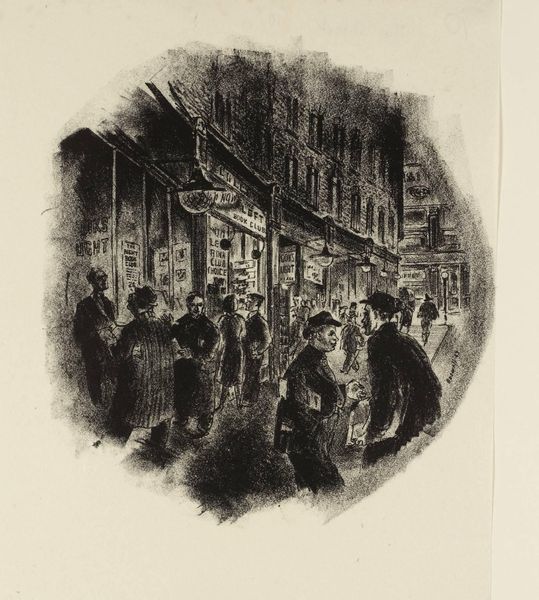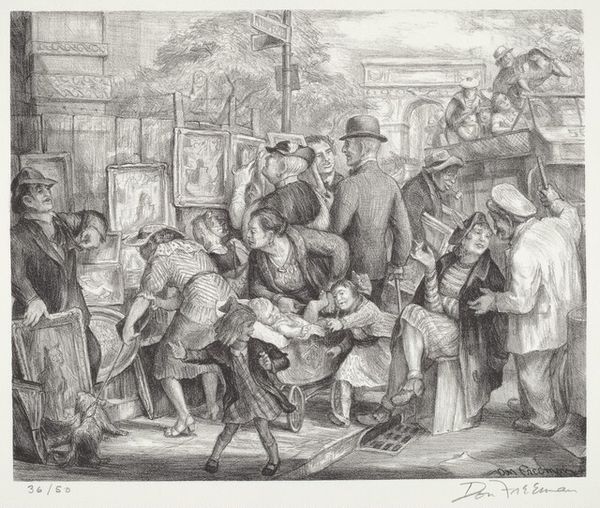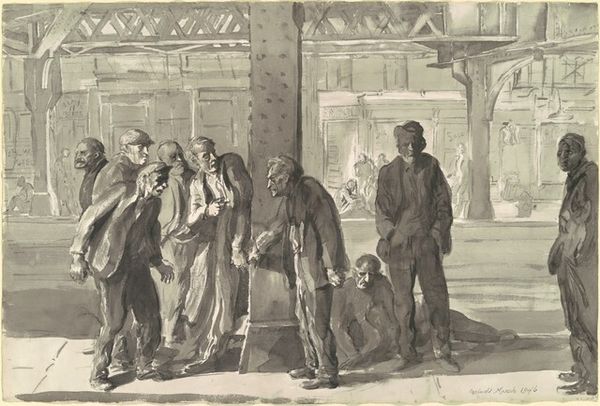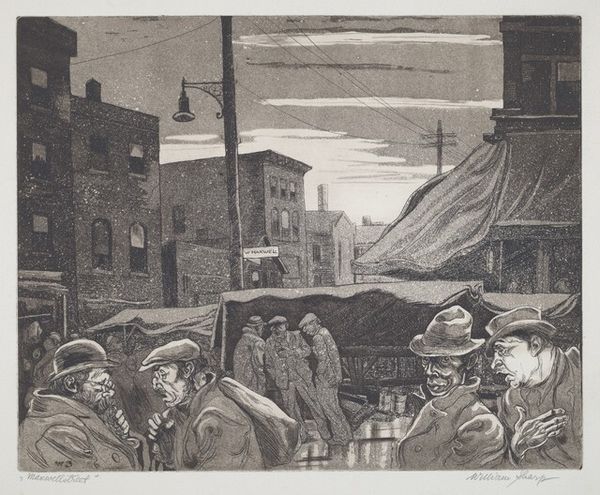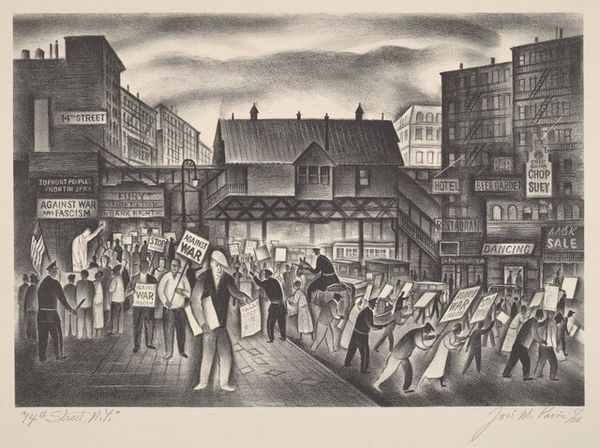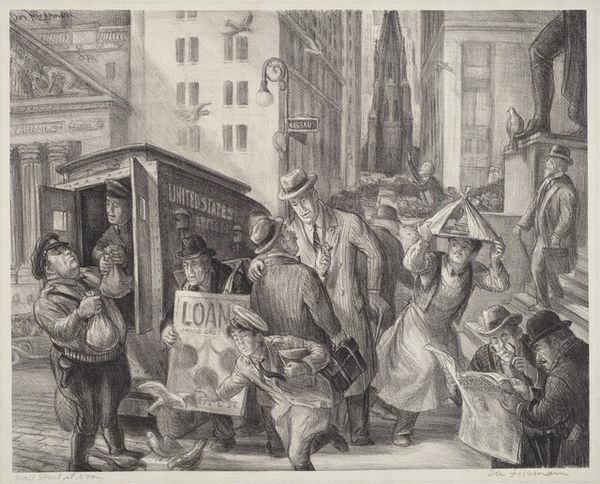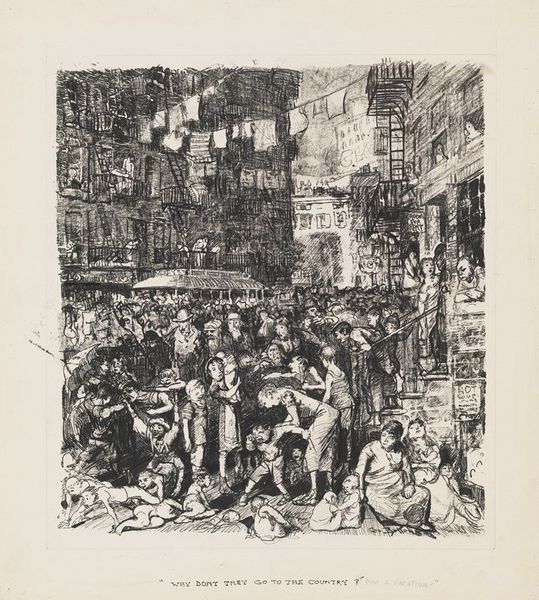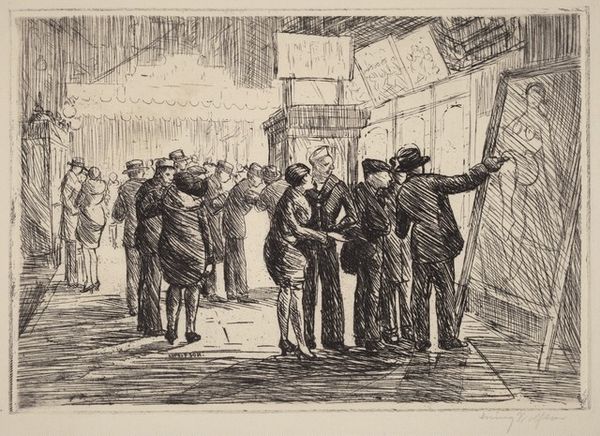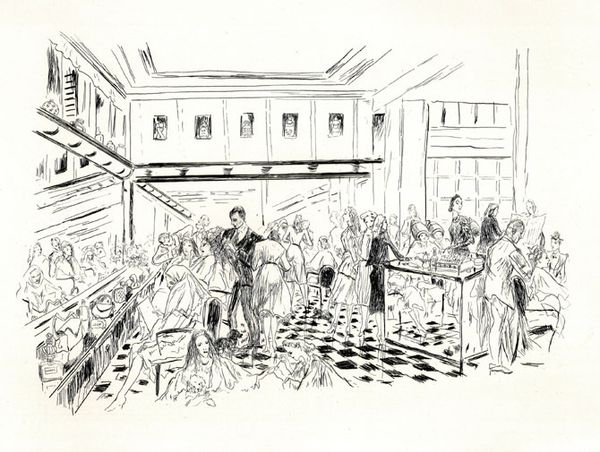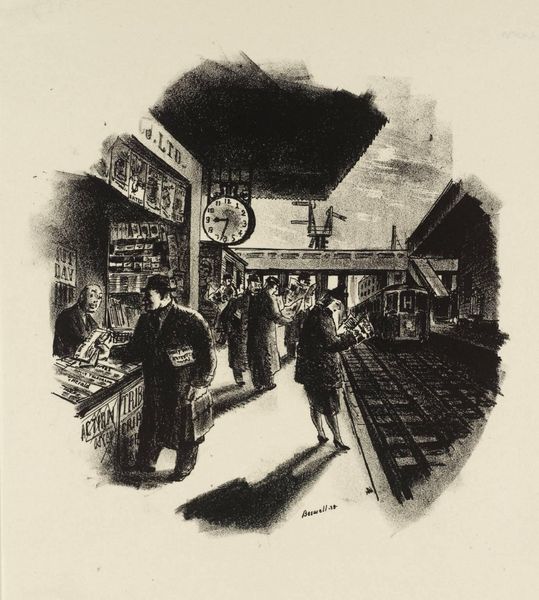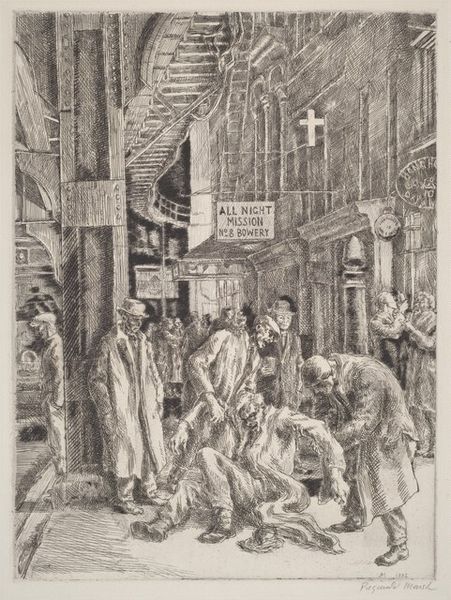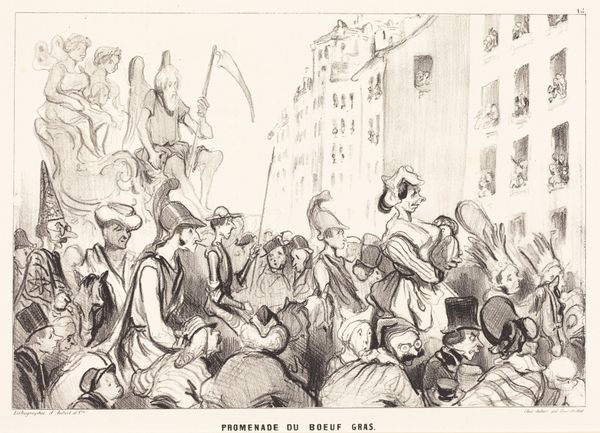
graphic-art, print, etching
#
graphic-art
#
narrative-art
# print
#
etching
#
ashcan-school
#
cityscape
#
realism
Dimensions: plate: 30.1 × 40 cm (11 7/8 × 15 3/4 in.) sheet: 34 × 43.5 cm (13 3/8 × 17 1/8 in.)
Copyright: National Gallery of Art: CC0 1.0
Editor: This is Harry Sternberg's "Broadway #2" from 1930. It's an etching, so a print, showing a crowded street scene. I'm immediately struck by the contrast – all the detailed cross-hatching gives it such a busy, almost claustrophobic feel. What stands out to you about this work? Curator: For me, it's about understanding the work as a product of its time, deeply embedded in the social and economic realities of 1930s America. The etching process itself – the labor-intensive act of carving into the metal plate – mirrors the grit and the industrial activity that Sternberg portrays. Look at how he renders the clothing: the worn coats, the simple hats. These are not the clothes of the wealthy; these are the garments of the working class. Editor: That's interesting, I hadn't thought about the connection between the process and the subject matter. So the very *making* of the art is commenting on the lives depicted? Curator: Precisely! And think about the location: Broadway. It’s the entertainment hub, but Sternberg shows us not the glamour, but the sheer mass of people, likely heading to or from work. Consider the consumption habits being displayed – newspapers clutched in hands. What kind of information are these individuals seeking and how might that shape their individual labor? Are they searching for employment opportunities? Sternberg isn’t just depicting a street scene; he is showing us the mechanisms of a capitalist society, how people are processed and consumed, much like the materials in any factory of this time. Does that perspective change your initial reaction? Editor: Definitely. Seeing it as less of a snapshot and more as a critical observation on labor and consumption… it’s a whole new layer. I was so focused on the visual texture, I missed the social commentary embedded in the materiality itself. Curator: The means of production is an implicit factor. We can now agree there's a real depth woven into every line of that etching.
Comments
No comments
Be the first to comment and join the conversation on the ultimate creative platform.

